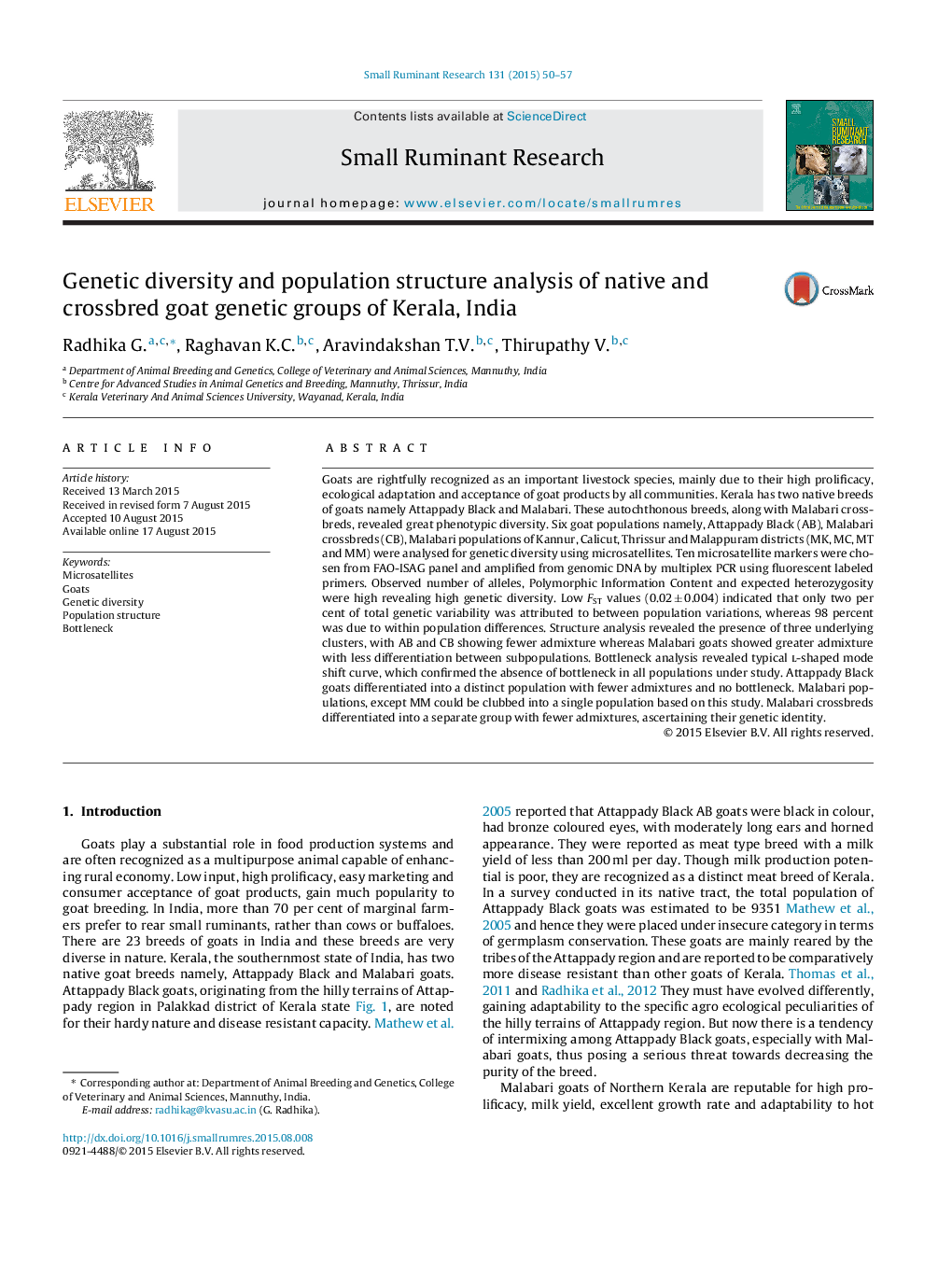| Article ID | Journal | Published Year | Pages | File Type |
|---|---|---|---|---|
| 2456724 | Small Ruminant Research | 2015 | 8 Pages |
•Six goat populations of Kerala analysed for genetic diversity using microsatellite.•High genetic diversity within populations, but low genetic divergence between them.•Structure analysis revealed three clusters, with much admixture in a native breed.•Bottleneck analysis confirmed absence of bottleneck in all populations.•Crossbred goats, ascertained their genetic identity.
Goats are rightfully recognized as an important livestock species, mainly due to their high prolificacy, ecological adaptation and acceptance of goat products by all communities. Kerala has two native breeds of goats namely Attappady Black and Malabari. These autochthonous breeds, along with Malabari crossbreds, revealed great phenotypic diversity. Six goat populations namely, Attappady Black (AB), Malabari crossbreds (CB), Malabari populations of Kannur, Calicut, Thrissur and Malappuram districts (MK, MC, MT and MM) were analysed for genetic diversity using microsatellites. Ten microsatellite markers were chosen from FAO-ISAG panel and amplified from genomic DNA by multiplex PCR using fluorescent labeled primers. Observed number of alleles, Polymorphic Information Content and expected heterozygosity were high revealing high genetic diversity. Low FST values (0.02 ± 0.004) indicated that only two per cent of total genetic variability was attributed to between population variations, whereas 98 percent was due to within population differences. Structure analysis revealed the presence of three underlying clusters, with AB and CB showing fewer admixture whereas Malabari goats showed greater admixture with less differentiation between subpopulations. Bottleneck analysis revealed typical l-shaped mode shift curve, which confirmed the absence of bottleneck in all populations under study. Attappady Black goats differentiated into a distinct population with fewer admixtures and no bottleneck. Malabari populations, except MM could be clubbed into a single population based on this study. Malabari crossbreds differentiated into a separate group with fewer admixtures, ascertaining their genetic identity.
